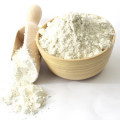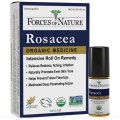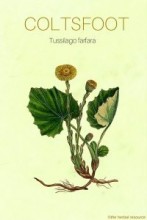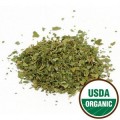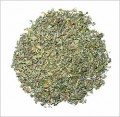 Loading... Please wait...
Loading... Please wait...- Home
- About Us
- Shipping, Returns & FAQ's
- Contact Us
-
For Your Information
- Canadian Customers Have a Choice if Shipping Via UPS
- Aura Cacia Homemade Aromatherapy Recipes
- Bella Nella Altered Art & Paper Crafts Blog
- Forms of Herbal Preparations
- Laundry Tips To Conserve Energy Blog from The Laundress
- The Story of Frontier Natural Products Co-Op
- Sovereign Silver Hydrosol and Aloe Protocol Stops Downward Spiral of Gut Dysbiosis
- Disclaimers
- Recommended Links
- RSS/Recent News
- The Story of Typhoon Housewares
- Reviews/Testimonials
- Raw Ingredients for Mfg
Coltsfoot Leaf Wildcrafted Bulk
Product Description
Traditional/Ethnobotanical Uses
As part of its Latin name Tussilago implies, coltsfoot is reputed as an antitussive. The buds, flowers, and leaves of coltsfoot have been long used in traditional medicine for dry cough and throat irritation. The plant has found particular use in Chinese herbal medicine for the treatment of respiratory diseases, including cough, asthma, and acute and chronic bronchitis. It also is a component of numerous European commercial herbal preparations for the treatment of respiratory disorders. Coltsfoot preparations long have been used to soothe sore throats. The mucilage most likely is responsible for the demulcent effect of the plant. A mixture containing coltsfoot has been smoked for the management of coughs and wheezes, but the smoke is potentially irritating. The mucilage is destroyed by burning; smoking the plant or inhaling vapors of the leaves steeped in water would not be expected to provide any degree of symptomatic relief. Instead, the smoke may exacerbate existing respiratory conditions. However, one source mentions coltsfoot in the form of a medicinal cigarette to help relieve asthma. Coltsfoot, in a mixture of Chinese herbs, has been evaluated in cases of convalescent asthmatics and found useful in decreasing airway obstruction.
Related conditions for which coltsfoot has been used include bronchitis, laryngitis, pertussis, influenza, and lung congestion. It is one of the most popular European remedies to treat chest ailments. All early references emphasize the usefulness of coltsfoot's mucilage for soothing throat and mouth irritation. Research reveals little or no clinical data on the anti-inflammatory action of coltsfoot.
India's traditional Ayurvedic doctors prescribed powdered coltsfoot in the form of snuff to treat cough, headache, and nasal congestion.
For cough and asthma, the ancient Greek physician Dioscorides and the Romans Pliny and Galen recommended a coltsfoot treatment thatincludes smoking the herb.
Coltsfoot may help treat respiratory problems in several ways. It contains a substance (mucilage) that may soothe the respiratory tract.
A German study using experimental animals showed the herb increases the activity of the microscopic hairs in the breathing tubes that move mucus out of the respiratory tract.
Another experiment shows that the herb suppresses a substance (platelet activating factor) in the body that is involved in triggering asthma attacks.
Recommended Dosage: Historical use of 4.5 to 6 g/day of crude herb has been documented.
A decoction of coltsfoot may be prepared with one ounce of leaves and one quart of water that is boiled to the point where the water has been reduced to a pint and then this preparation can be sweetened with honey.
Frequent cups of the decoction throughout the day, should provide relief from colds and asthma.
Contraindications
Because of the content of hepatotoxic (toxic to the liver) pyrrolizidine alkaloids, coltsfoot is not recommended for internal use.
Pregnancy/Nursing: Documented adverse effects (hepatotoxic pyrrolizidine alkaloids, risk of fatal hepatic veno-occlusive disease, abortive effects). Avoid use.
Interactions: None well documented.
Side Effects: Allergic reactions may occur.
Toxicities: Coltsfoot has an "undefined safety" classification by the FDA. Avoid prolonged use of the plant; it may increase blood pressure and pose a risk of carcinogenicity, hepatotoxicity, or mutagenicity.
![]() Nature's Secret Respiratory Support & Defense, 60 Tablets is available under drop-down menu as last "Other" option. SKU# 94474-4 UPC: 710363255602
Nature's Secret Respiratory Support & Defense, 60 Tablets is available under drop-down menu as last "Other" option. SKU# 94474-4 UPC: 710363255602
Botanical Name: Tussilago farfara
aka: coughwort, feuilles de tussilage (Fr.), horse-hoof, huflattichbältter (Ger.), kuandong hua, bull’s foot, assfoot, farfara, foalswort, foal’s foot, winter heliotrope, bechion, bechichie, bechie, donnhove, butterbur, tash plant, ass's foot, cleats
Origin: Croatia/Eastern Europe
Notes: Kosher Certified. Non-irradiated. Non-GMO.
Specifications are subject to change without notice.
* FDA disclaimer
References
Coltsfoot. Review of Natural Products. factsandcomparisons4.0. 2005.
Drugs.com
The Herbal Resource
You Recently Viewed...
Currency Converter
Choose a currency below to display product prices in the selected currency.




